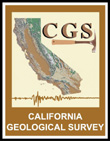
|
California Division of Mines and Geology
Special Report 106 Geologic Features—Death Valley, California |
PREFACE
This Collection of papers and maps was published in 1974 as part of a guidebook prepared for a geologic field trip from Las Vegas, Nevada, to Death Valley.
Several of these papers have been corrected and modified since they were published in the guidebook. The guidebook was published by The Death Valley Publishing Company, Shoshone, CA 92384, for Field Trip No. 1 of the 70th annual meeting of the Cordilleran Section, Geological Society of America. The guidebook contains the following additional papers:
Geologic Guide to the Death Valley Region, California and Nevada, by Bennie W. Troxel.
Geology of the Spring Mountains, Nevada, by B. C. Burchfiel, R. J. Fleck, D. T. Secor, R. R. Vincelette, G. A. Davis.
Turtleback Surfaces of Death Valley Viewed as Phenomena of Extensional Tectonics, by Lauren A. Wright, James K. Otton, Bennie W. Troxel.
Geology of the Furnace Creek Borate Area, Death Valley, Inyo County, California, by James F. McAllister.
Significance of a Man-made Diversion of Furnace Creek Wash at Zabriskie Point, Death Valley, California, by Bennie W. Troxel.
Correlation (chart) of Lower Cambrian and Some Precambrian Strata in the Southern Great Basin, by J. H. Stewart.
Bennie W. Troxel
Geologist
California Division of Mines and Geology
March, 1976

|
| Correlation of Lower Cambrian and some Precambrian strata in the southern Great Basin. (Modified from J. H. Stewart, 1966) (click on image for a PDF version) |

|
| High-altitude oblique aerial photograph oriented approximately west-southwestward across Death Valley. The valley between Furnance Creek (right) and Smith Mountain (left) extends across the central part of the photograph. The Black Mountains, Greenwater Valley (and Furnace Creek Wash) and the northern part of the Greenwater Range are towards the observer. A small segment of the Funeral Mountains forms right foreground. Badwater is near white patch in center of photograph. The Panamint Range on west side of Death Valley has a line of scattered clouds along its crest. Patch of clouds in upper right is approximately over Mt. Whitney in the Sierra Nevada. Photo U.S. Air Force 018R 194. 10 July 1968; courtesy of the U.S. Geological Survey. |

|
| High-altitude vertical aerial photograph of floor of north-central Death valley. Top of photograph is to north. Symmetrical alluvial fan at left upper edge of photograph is at mouth of Furnace Creek Wash. Black Mountains on right and east margin of Panamint Range on lower left. Badwater is on right edge of prominent white patch in right-central part of photograph. East-dipping Paleozoic strata form v's in part of Panamint Range. Hanaupah fault truncates fans from Panamint Range (lower center). Very young faults bound steep smooth west side of Black Mountains (right). Photo U.S. Air Force 314V 192, 6 September 1968; courtesy of the U.S. Geological Survey. |

|
| High-altitude oblique aerial photograph to southwest across south-central Death Valley. Black Mountains in foreground. Owlshead Mountains, left center, and southern Panamint Range, right center, are on opposite sides of Wingate Wash. Garlock fault extends obliquely across upper one-third of photograph on far side of Owlshead Mountains. Range with bulbous south end (upper right center) is Slate Range. Searles Lake lies to right of Slate Range. San Bernardino and San Gabriel Mountains and Sierra Madre near horizon beyond Mojave Desert. Southern end of Sierra Nevada in upper right. Photo U.S. Air force, 374R 194, 6 September 1968; courtesy of the U.S. Geological Survey |
| <<< Previous | <<< Contents >>> | Next >>> |
state/ca/cdmg-sr-106/preface.htm
Last Updated: 24-Jul-2009